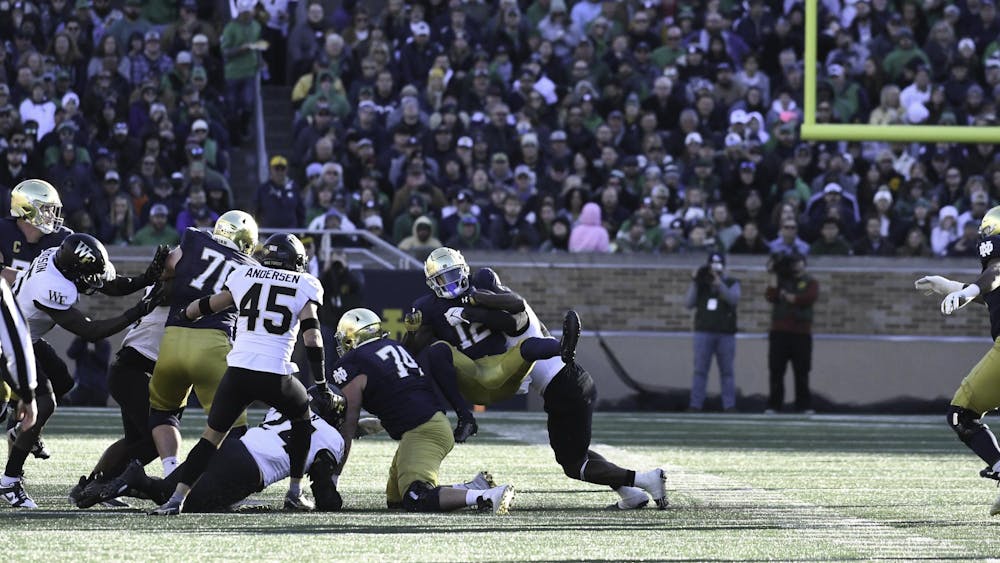Editor's note: This week, Sports Authority columnists will attempt to answer the question, “What is the best sports venue?”
I knew I needed to stay on brand here with my answer.
I thought about a lot of different venues, from around the world, but at the end of the day, I felt I’d only be able to definitively talk on the venues that I know the best, the ones I grew up attending annually. So that narrowed it down pretty quickly to a couple options.
One choice was Hinkle Fieldhouse, which for my money remains the greatest basketball venue this world has — and yes, I’ve been to the Palestra in Philadelphia. Built in the late 1920s as the largest basketball venue in the world, the then-Butler Fieldhouse significantly shaped the development of the sport in its true spiritual home, Indiana.
While I could talk for days about Hinkle, I’ll stop now with one other venue on my mind: the Indianapolis Motor Speedway.
Throughout the history of sports, there may be no single venue more synonymous with its purpose than IMS is with auto racing. Dating back to 1909, when the Brickyard was, well, actually made entirely of bricks, the Speedway has served America’s need for speed.
But for all, the Speedway, and its signature Indianapolis 500 race, stands for to the racing world, its impact has been felt well outside of the 2 1/2-mile circuit on the former corner of 16th Street and Georgetown Road. (They replaced that old intersection with a roundabout, which by definition has no corners, that Georgetown no longer actually connects to. It’s neat.)
In the same way that many credit NASA’s space programs for so many developments in day-to-day life, what went on in Speedway, Indiana — yes, the town is actually named for the track — shaped the direction of the auto industry for years and years. The progress and innovation on the track led to progress and innovation on the road. When Ray Harroun won the first-ever 500 in 1911, he did it driving with a rearview mirror so he wouldn’t have to ride with a mechanic. A few years later, it was a popular addition to early automobiles. Soft tires? They got their start in Indianapolis. Front-wheel drive and superchargers? First seen in the 1920s at the Speedway. Harnesses made their appearance at Indianapolis long before seatbelts were found in everyday cars, while Indy teams’ aerodynamic advancements in the ’70s found their way to the tails and spoilers of modern automobile design as time went on.
And then there’s the non-racing significance of what’s gone on at the Speedway. Much in the same way that going to the moon didn’t practically improve lives, the improvements we’ve seen over the last 100-plus years at IMS have been a beacon of the American spirit, that need to push farther and to innovate. The 500’s first qualifications, held in 1912, saw a top speed of just 80.93 miles achieved. By 1921, Ralph DePalma topped 100 mph, and as time went on speeds progressed ever quickly. In 1962, Parnelli Jones finally hit 150 — 10 years later, speeds topped 195 miles per hour.
While we haven’t set a qualifying record in 21 years, innovation has taken a new turn since at IMS: safety. In 2002, Indianapolis was the first track to receive the so-called SAFER barrier that greatly reduces risk in high-speed crashes.
We still haven’t really touched on the 500’s numerous traditions — from the pre-race playing of “Back Home Again (In Indiana)” to the winner’s post-race celebratory swig of milk — because they’re the icing on the cake here. When the calendar turns to May in Indianapolis, it might as well be the start of summer, even if school’s still in session past Memorial Day. Alongside our nearby neighbors down Interstate 65, where Louisville’s Kentucky Derby serves a similar purpose, few events are as synonymous with their home towns as the 500 is with Indianapolis.
The Indianapolis Motor Speedway, the venue itself, is great enough as it is. Sitting in that first corner, watching cars dive so gracefully into a turn at 230 miles per hour, is one of the most beautiful views in the world. But add in the innovation that’s impacted both the racing and “real” world, combine that with the track’s traditions and factor the impact it has on an entire city, well, you have one heck of a venue.
Perhaps the best in sports.













